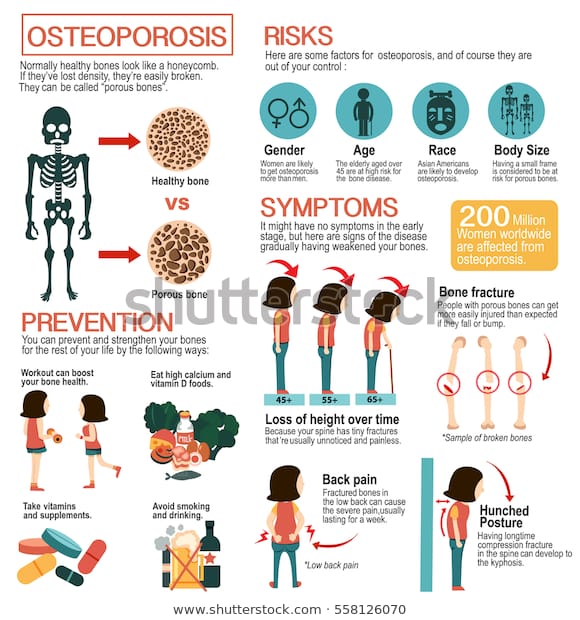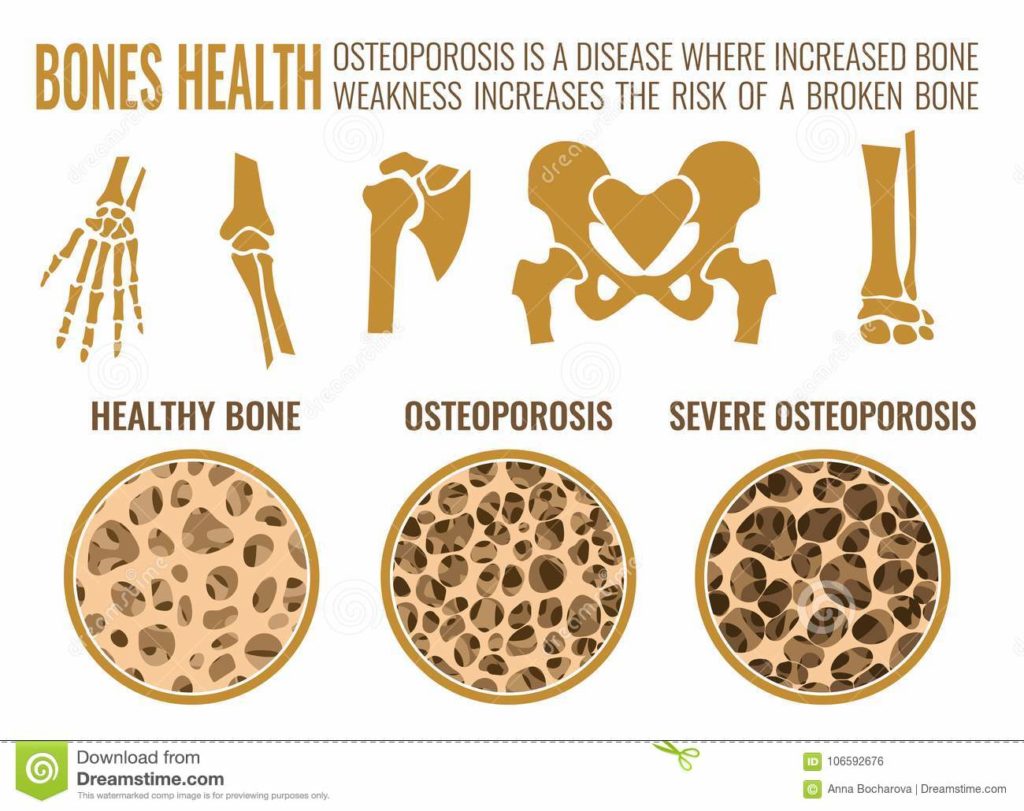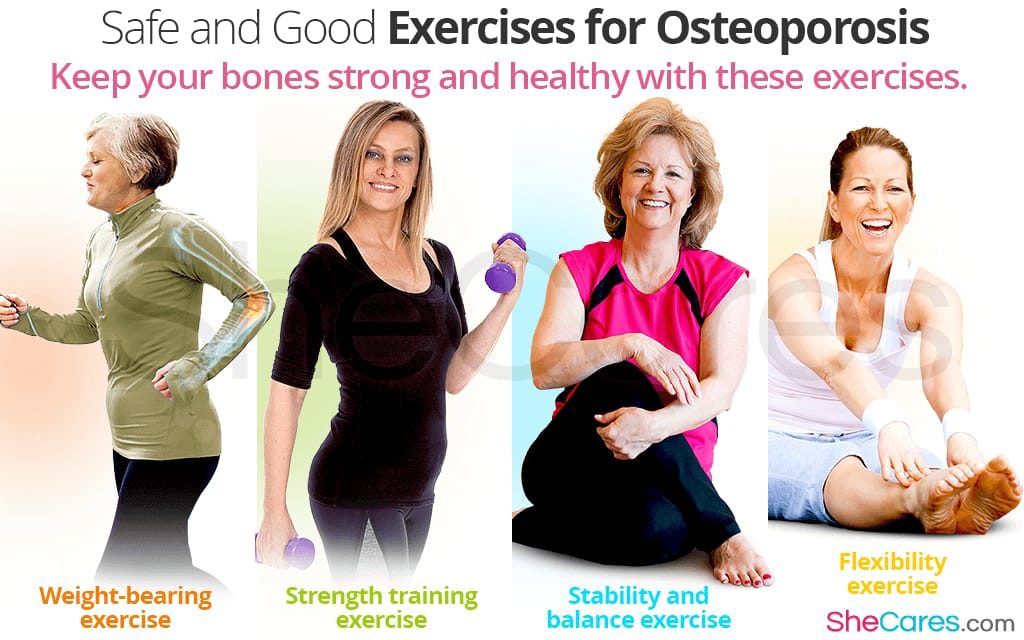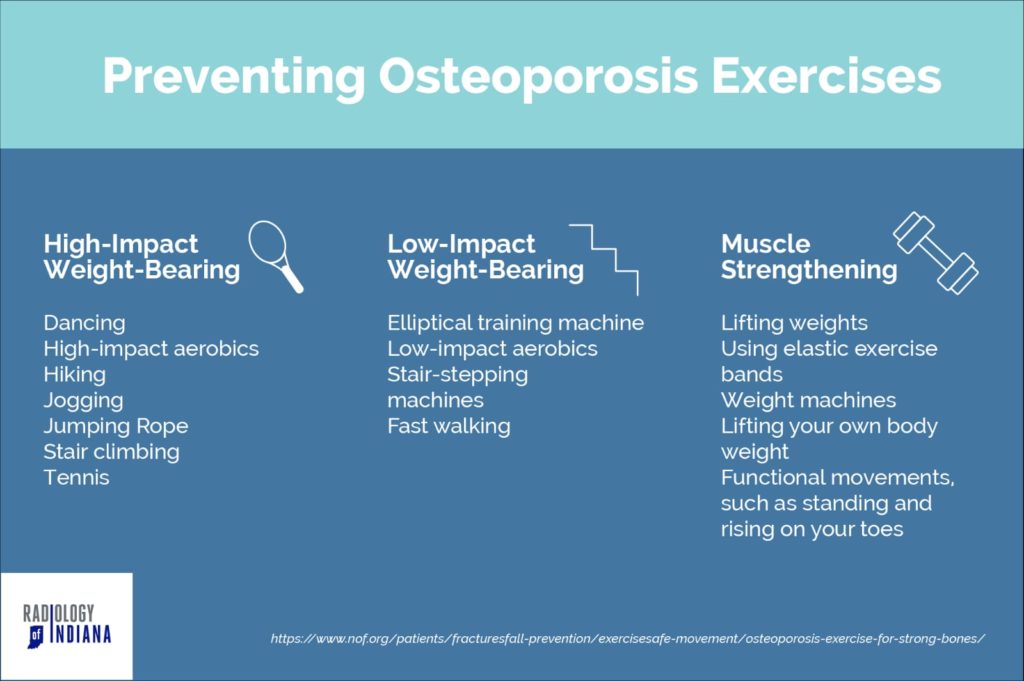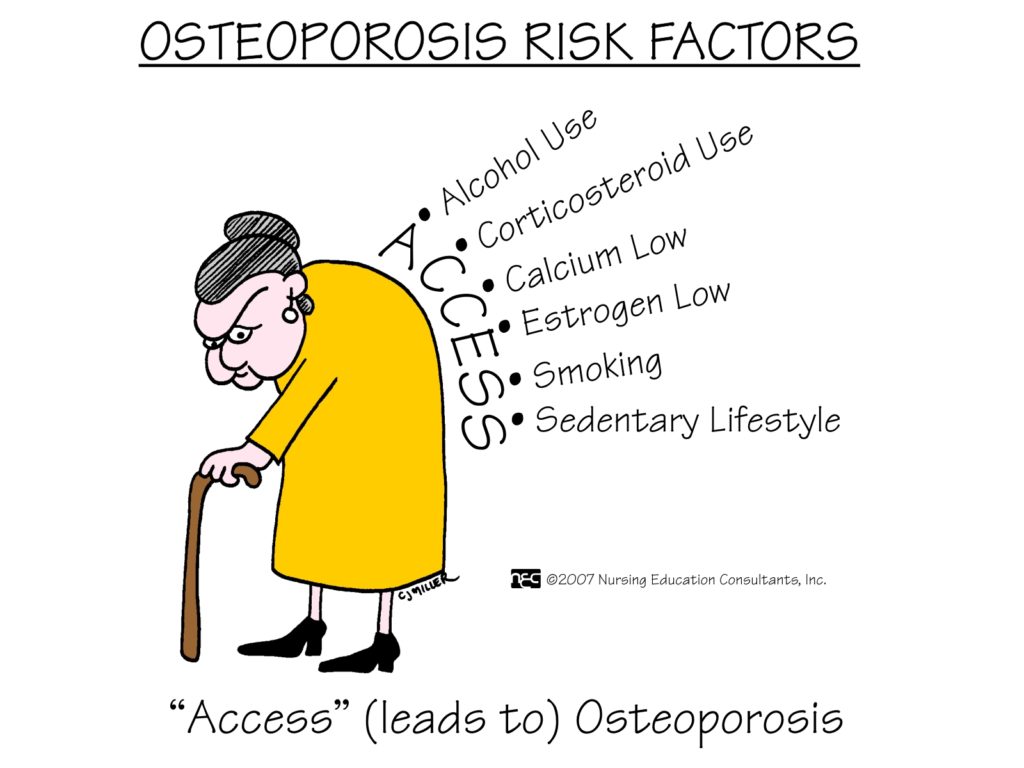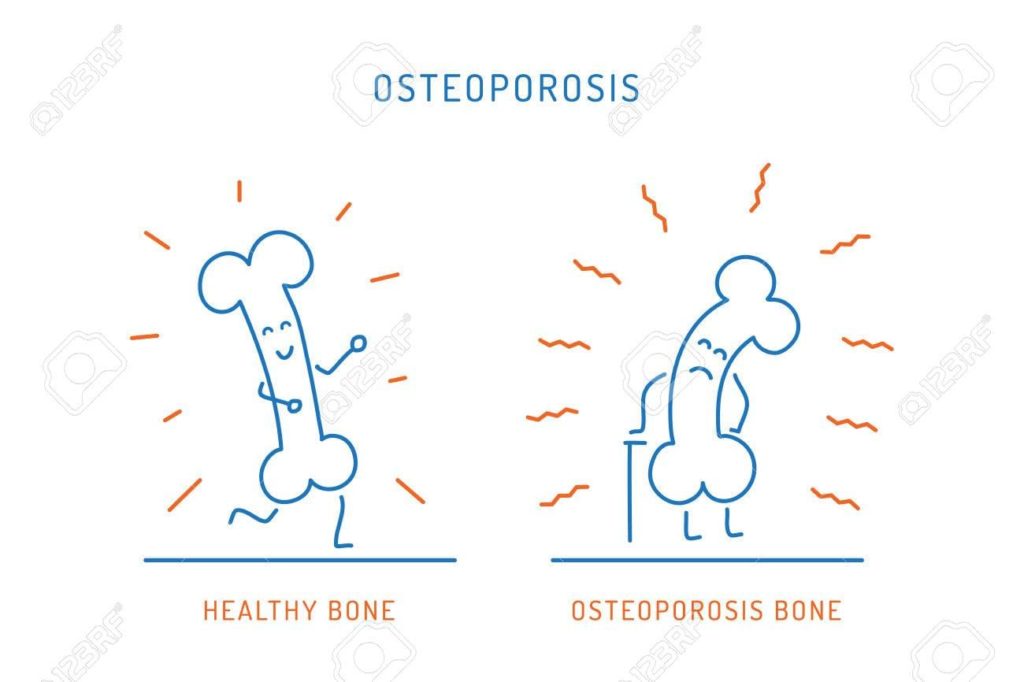Beat Osteoporosis with Exercise
Osteoporosis means “porous bone”. Osteoporosis is a bone disease that occurs when the body loses too much bone, makes too little bone, or both. As a result, bones become weak & may break easily.
In mild osteoporosis, the bones may only break with a strong force or injury. In more severe osteoporosis, bones may break with even a gentle knock or sudden movement.
What causes Osteoporosis?
Osteoporosis can have a number of causes:
• Too little calcium, vitamin D or other nutrients to build bones
• Too little exercise or activity to strengthen bones
• Underlying medical conditions that change the collagen in bones
• Medications that slow down the rate at which new bone is created
Other risk factors include:
• Absence of menstrual periods for long periods of time
• A family history of osteoporosis
• Drinking a large amount of alcohol
• Low body weight
• Smoking
Symptoms –
There are typically no symptoms in the early stages of bone loss therefore also known as silent disease. But over a period of time, you might have signs and symptoms that include:
• Loss of height over time
• A stooped or hunched posture
• Bone that breaks much more easily than expected
• Bone pain or tenderness
• Lower back pain
Treatment & care
Physical activity is the most important factor supporting bone growth. Active bones are denser & stronger than sedentary bones. A regular, properly designed exercise program may actually help prevent falls and fractures.
That’s because exercise strengthens bones and muscles and improves balance, coordination, and flexibility.
That’s key for people with osteoporosis. Load/weight bearing exercises prevent bone loss & improves bone density.
Types of exercise that helps in Osteoporosis include –
• Weight bearing exercises
• Strength training exercises
• Stability & balance exercises
• Flexibility exercises
Weight-Bearing Exercises
These types of workouts aren’t about pumping iron but they are exercises you do on your feet so that your bones and muscles have to work against gravity to keep you upright.
Examples include walking, dancing, low-impact aerobics, elliptical training machines, stair climbing and gardening.
These types of exercise work directly on the bones in your legs, hips and lower spine to slow mineral loss. They also provide cardiovascular benefits, which boost heart and circulatory system health.
Strength training
Strength training includes the use of free weights, resistance bands or your own body weight to strengthen all major muscle groups, especially spinal muscles important for posture. Resistance training can also help maintain bone density.
Flexibility exercises
Moving your joints through their full range of motion helps you keep your muscles working well. Stretches are best for flexibility. They should be done gently and slowly, without bouncing.
Stability and balance exercises
Fall prevention is especially important for people with osteoporosis. Stability and balance exercises help your muscles work together in a way that keeps you more stable and less likely to fall.
Simple exercises such as standing on one leg or movement-based exercises help improve your stability and balance.
“Osteoporosis is not an inevitable part of ageing, it is preventable. So it is vital that all of us, of all ages, start taking care of our bones now, before it is too late”.
For further information reach out to us at –
Pooja Physiotherapy & Health Care Center
Blk 77 Indus road #01-521S’160077.
Call now@ 6384 5452 or Whatsapp@ 8322 3371 or
drop an email at info@physiopooja.com.sg
